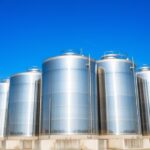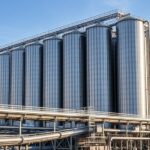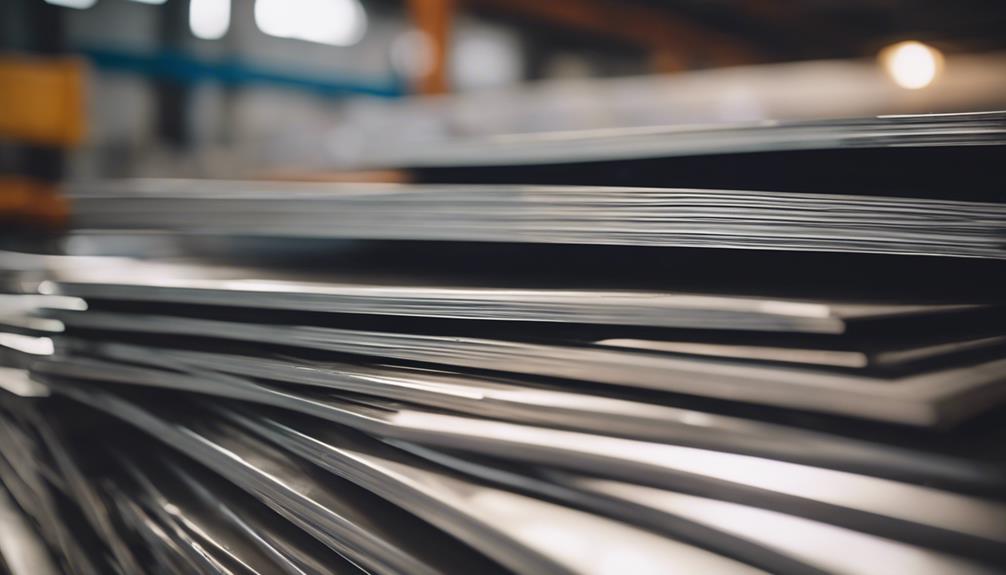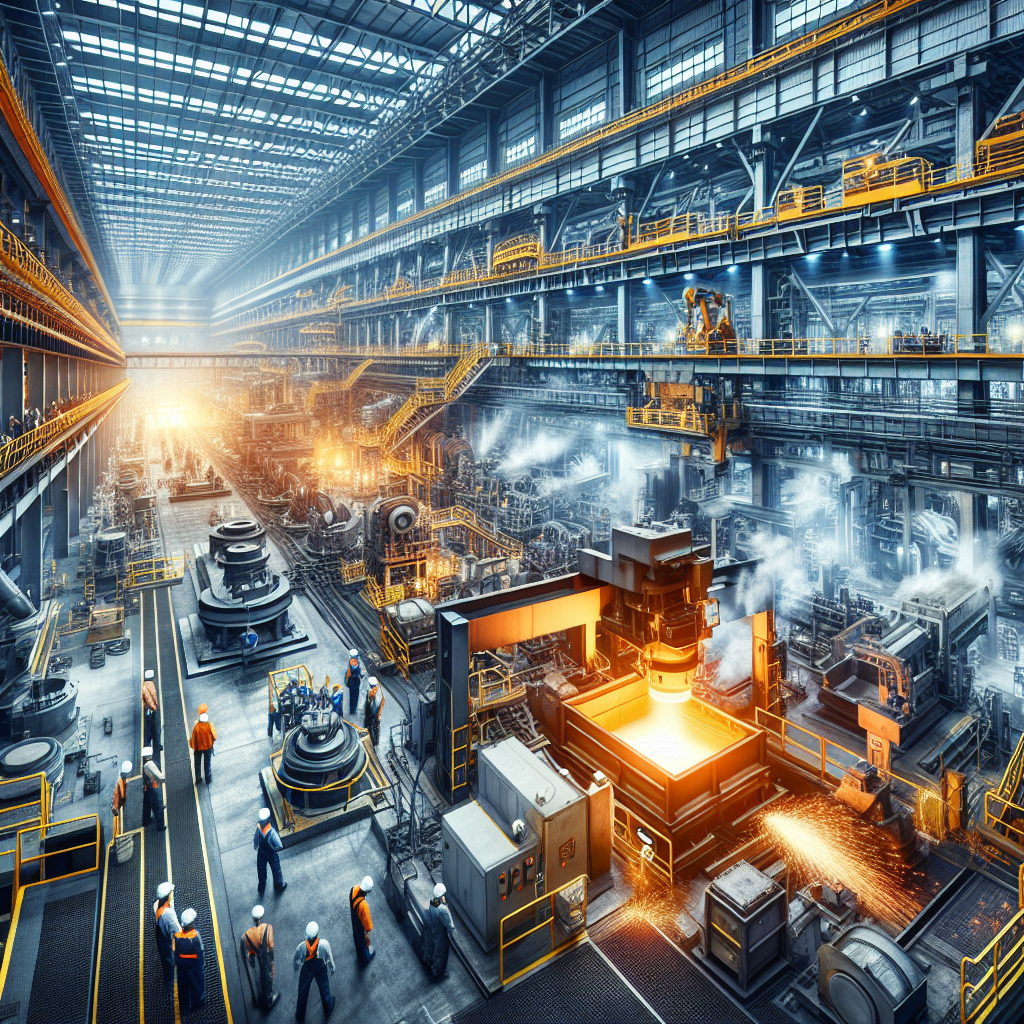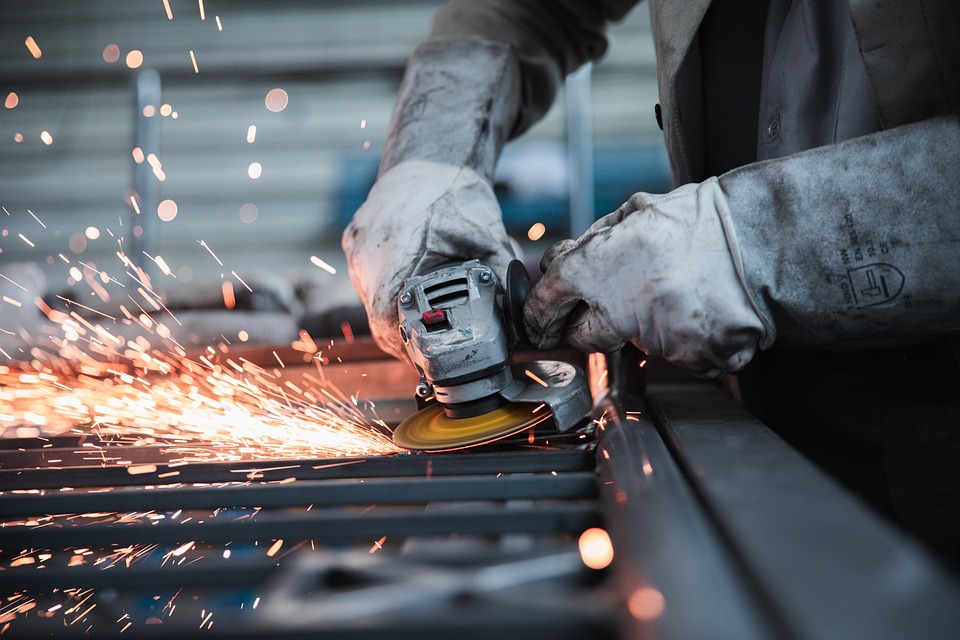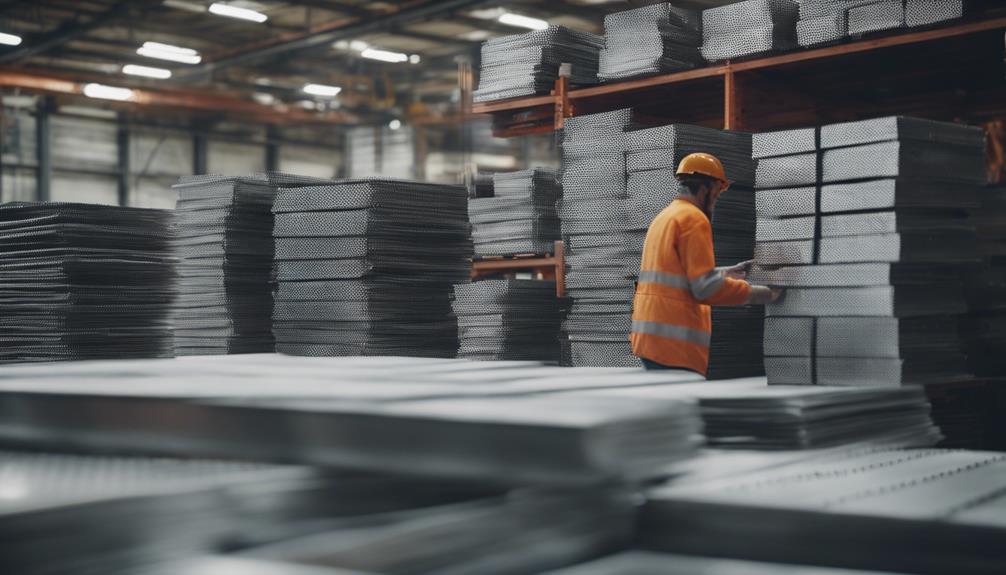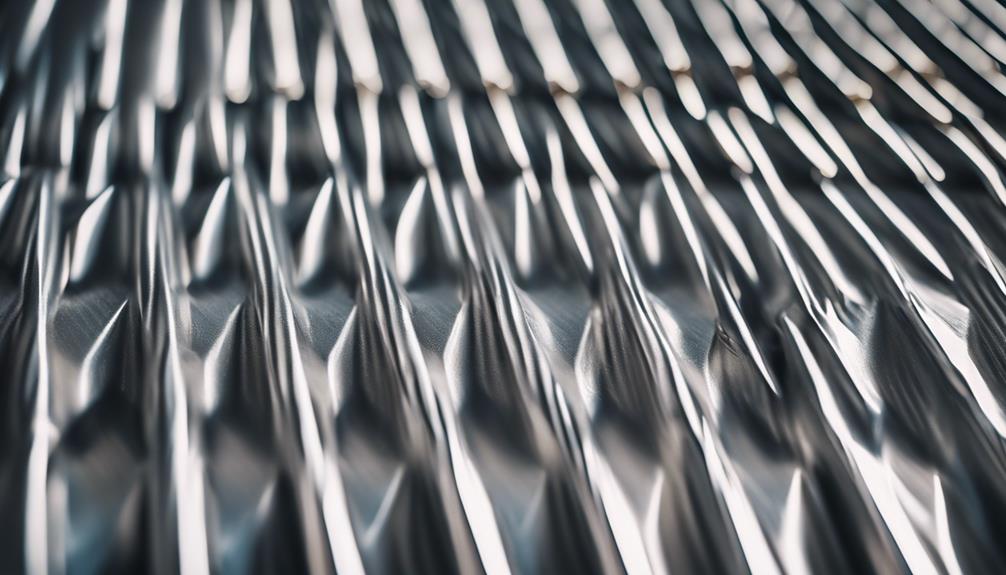Steel sheets are highly valued for their robustness, resistance to corrosion, and adaptability to different forms. They offer a wide range of finishes, from matte to high gloss, suitable for various applications across industries, particularly in construction projects for roofing and cladding. When selecting steel sheets, factors such as grade, finish, thickness, and material should be carefully considered. Additionally, maintenance routines such as regular cleaning and proper storage help preserve their durability and appearance. The environmental advantages of steel sheets, including recyclability and energy-saving properties, make them a sustainable choice for many projects.
Key Takeaways
- High strength and corrosion resistance make steel sheets durable.
- Versatile finishes available for aesthetic and functional customization.
- Suitable for diverse applications in construction and other industries.
- Consider factors like grade, finish, thickness, and material options.
- Environmentally friendly due to recyclability and contribution to sustainability.
Advantages of Steel Sheets
Steel sheets offer a multitude of advantages due to their high strength, durability, and versatility in various structural applications. These sheets provide exceptional resistance to corrosion, ensuring longevity and requiring minimal maintenance over time. Their ability to be easily fabricated into different shapes and sizes makes them highly adaptable to meet specific project requirements, enhancing their usability in construction and manufacturing. Additionally, steel sheets exhibit good thermal conductivity, making them ideal for applications that involve heat transfer processes. Moreover, their recyclability and contribution to sustainable construction practices make them an environmentally friendly choice for projects aiming to reduce their carbon footprint and promote eco-conscious building materials.
Types of Steel Sheet Finishes
With a diverse array of finishes available, steel sheets offer a range of aesthetic and functional options to suit various industrial applications, including construction, architecture, and manufacturing. Options for steel sheet finishes include 2B-Finish, Mill Finish, Brush Finish, Hairline Finish, Mirror Finish, and Gold Mirror Finish. These finishes are applicable to stainless steel and aluminum sheets, with various grades such as 201, 304, 316L, and AA 1100. Each finish provides different levels of sheen, smoothness, and reflectivity, catering to diverse aesthetic and functional requirements. The unique appearance and properties of each finish make them suitable for specific applications within industries like construction, architecture, and manufacturing. Selecting the appropriate finish is crucial for achieving the desired look, performance, and corrosion resistance in steel sheet applications.
Applications in Construction Industry
In the construction industry, steel sheets play a pivotal role in various applications such as roofing, cladding, and structural components, owing to their exceptional durability and strength. These sheets offer excellent corrosion resistance, making them suitable for outdoor and harsh weather conditions in construction projects. Their versatility in design allows for customization in shapes, sizes, and finishes to meet specific construction requirements. Steel sheets are commonly used in building facades, interior decorations, and architectural elements to enhance both aesthetics and functionality. With a range of grades and thickness options available, steel sheets cater to diverse construction needs, ensuring structural integrity and longevity in various projects.
Factors to Consider When Choosing Steel Sheets
When selecting steel sheets for construction projects, it is crucial to thoroughly assess factors such as grade, finish, thickness, material options, and compliance with industry standards to guarantee peak performance and longevity. The grade of the steel sheet, whether 304 or 316, should meet the required corrosion resistance standards. Consider the available finish options like brushed, hairline, or mirror finish based on aesthetic requirements. Evaluate the thickness range offered, from 0.1mm to 8.0mm, to ensure it suits structural or design needs. Look for material options such as stainless steel, aluminium, galvanized, or mild steel, depending on application and environmental conditions. Confirm compliance with industry standards like RoHS and ANSI/ESD for quality assurance.
Maintenance Tips for Steel Sheets
Proper maintenance is essential for preserving the integrity and longevity of steel sheets in construction applications. To guarantee the durability of steel sheets, regularly clean them with a gentle detergent and water to prevent corrosion and maintain their appearance. When cleaning, use a non-abrasive cloth or sponge to avoid scratching the surface. Additionally, applying a protective coating or wax can enhance the steel sheets' durability and resistance to rust. It is vital to inspect the sheets regularly for any signs of damage or wear, addressing any issues promptly. Proper storage in a dry, well-ventilated area is also important to prevent moisture buildup and oxidation, further extending the lifespan of the steel sheets.
Environmental Benefits of Steel Sheets
Preserving the integrity and longevity of steel sheets in construction applications extends beyond maintenance; their environmental benefits play a significant role in promoting sustainability practices. Steel sheets are highly recyclable, with steel being the most recycled material globally, reducing the need for new raw materials. The recycling process of steel sheets saves energy, reduces greenhouse gas emissions, and minimizes water usage compared to producing new steel. Due to their long lifespan, steel sheets can be repurposed or recycled at the end of their use, contributing to sustainable practices. Additionally, using steel sheets in construction can aid in achieving green building certifications, thanks to their environmental benefits and durability. By being easily recycled into new products, steel sheets contribute to circular economy principles, promoting overall resource efficiency.
Frequently Asked Questions
What Are Steel Sheets Used For?
Steel sheets are versatile materials widely employed across industries for their strength, durability, and adaptability. They find applications in construction, automotive manufacturing, household appliances, aerospace components, and various industrial equipment due to their robust properties.
Which Steel Sheet Is Best?
In considering the best choice among steel sheets, factors such as corrosion resistance, durability, and intended application must be weighed. Stainless steel Grade 316 offers exceptional corrosion resistance due to its Molybdenum content, making it a preferred option in many scenarios.
How Heavy Is a 4×8 Sheet of Steel?
The weight of a 4×8 sheet of steel varies depending on the type and thickness of the steel used. Typically, a mild steel sheet of this size weighs around 150 pounds. Thicker sheets will weigh more, and stainless steel sheets may be slightly heavier due to their density.
How Big Is a Sheet of Steel?
A sheet of steel typically measures 4 feet wide by 8 feet long, making it 32 square feet in total area. Steel sheets are commonly available in various thicknesses to suit different applications, offering versatility in construction and manufacturing.


